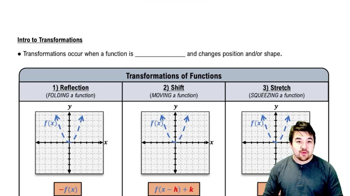Horizontal and Vertical Asymptotes
Determine the domain and range of y = (√16―x²) / (x―2).
 Verified step by step guidance
Verified step by step guidance Verified video answer for a similar problem:
Verified video answer for a similar problem:



 1:36m
1:36mMaster Introduction to Calculus Channel with a bite sized video explanation from Patrick
Start learning